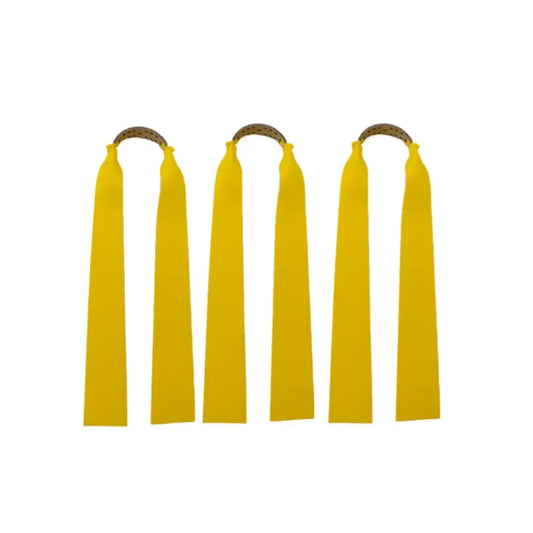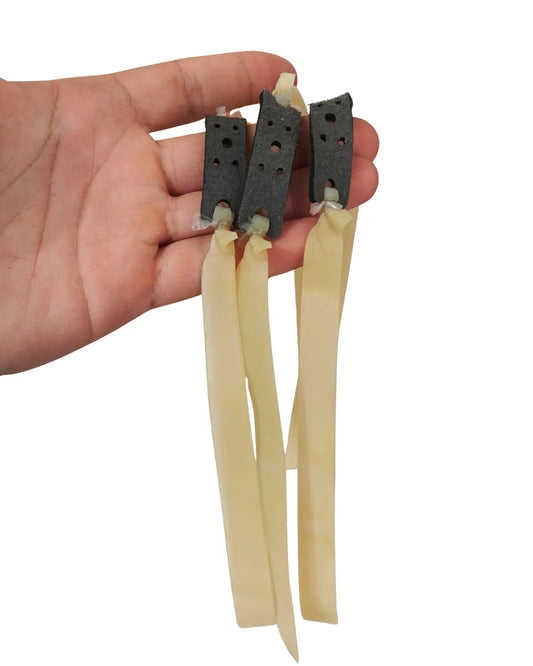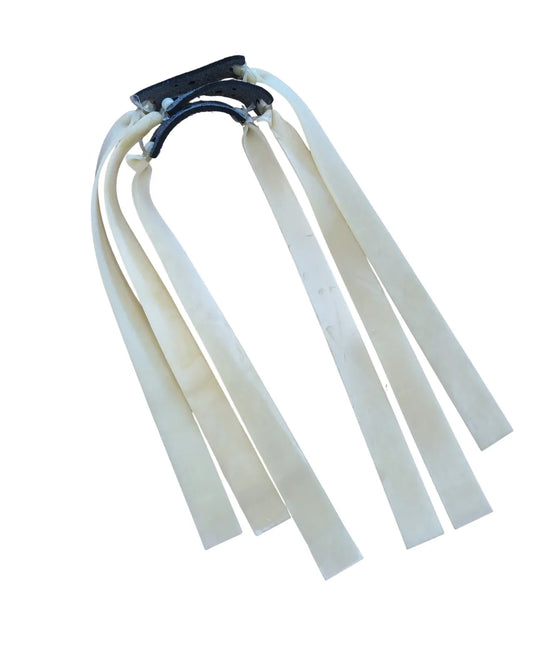Slingshot Rubber Bands Catalog
-
Usual price Starting at 6,00€.Usual priceUnit price per
-
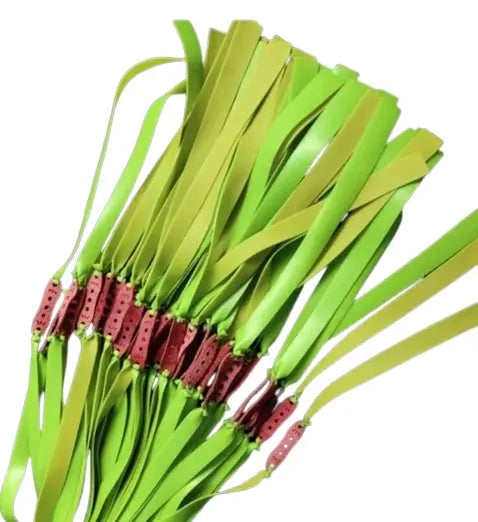
 Sold outUsual price Starting at 6,00€.Usual priceUnit price per
Sold outUsual price Starting at 6,00€.Usual priceUnit price per -
 Sold out
Sold out -
 Sold outUsual price 8,00€Usual priceUnit price per
Sold outUsual price 8,00€Usual priceUnit price per10,00€Offer price 8,00€Sold out -
Usual price 8,00€Usual priceUnit price per
10,00€Offer price 8,00€Offer -
Usual price 9,00€Usual priceUnit price per
-

Free Shipping
-

Fast Delivery
-

Secure Payment
-

Quality rubbers
Frequently Asked Questions
Which is better: rubber bands or rubber sling tubes?
Choosing between rubber bands or rubber tubing for your slingshot depends on your intended use and personal preference. Here are the key differences between the two types:
Rubber Bands
Advantages:
- Higher Velocity: Rubber bands usually provide a higher initial velocity to the projectile, which can be beneficial for long distance shooting.
- Easy Replacement: They are generally easier to replace and adjust.
- Variety: Available in different thicknesses and resistances, allowing a more precise customization according to your needs.
Disadvantages:
- Limited Durability: They can wear out faster than rubber hoses, especially with intensive use.
- Stability: At times, belts may offer less stability compared to tubes.
Rubber Tubes
Advantages:
- Greater Durability: Rubber tubing tends to be more durable and wear-resistant, making it ideal for prolonged use.
- Stability and Control: They offer better control and stability, which can improve the accuracy of your shots.
- Consistency: They maintain a constant strength over time, which can result in more consistent shots.
Disadvantages:
- Lower Speed: Generally, rubber hoses provide a lower initial speed compared to belts.
- More Difficult Replacement: They can be more difficult to replace and adjust correctly.
Which One Should You Choose?
- For Recreational and Beginner Activities: Rubber bands are an excellent choice due to their ease of use and adjustability.
- For Hunting and Competition: Rubber tubes may be preferable for their durability and consistency in shooting, although some competitive shooters also prefer high quality bands.
Ultimately, the choice between rubber bands and rubber tubes depends on your personal preferences and the specific use you intend to make of the slingshot. We encourage you to try both types to see which one best suits your needs and shooting style!
What is the correct thickness for the elastic bands of a slingshot?
The thickness of rubber bands for a slingshot varies depending on the type of use and personal preference. Here I provide a general guide to help you choose the right thickness:
Elastic Band Thickness
- Thin strips (0.3 mm to 0.5 mm):
- Medium bands (0.5 mm to 0.7 mm):
- Thick bands (0.7 mm to 1 mm or more):
Factors to Consider
- Type of Activity: Determines the thickness based on whether the use will be recreational, hunting, or competition.
- Puller Strength: Thicker bands require more strength, so consider your physical capabilities.
- Projectile Type: Thicker bands are better for heavier projectiles, while thinner bands work well with lighter projectiles.
Recommendations
- For Beginners: Bands between 0.4 mm and 0.6 mm are usually a good choice, as they are easy to handle and provide enough power to learn.
- General Purpose: 0.5 mm to 0.7 mm belts offer a good balance between power and ease of use.
- For Advanced Use and Hunting: 0.7 mm to 1 mm bands provide the power and durability needed for more demanding shots.
Examples of Use
- Recreation and Target Shooting: 0.4 mm to 0.6 mm bands.
- Small Game Hunting: 0.6 mm to 0.8 mm bands.
- Competition and Big Game: Bands from 0.8 mm to 1 mm or more.
Choosing the right thickness of rubber bands depends on balancing power and ease of use for your specific needs. Experimenting with different thicknesses can help you find the best option for your shooting style.
More Slingshot Collections
-

Professional Slingshots
Professional slingshots for nature lovers and people from the world...
-
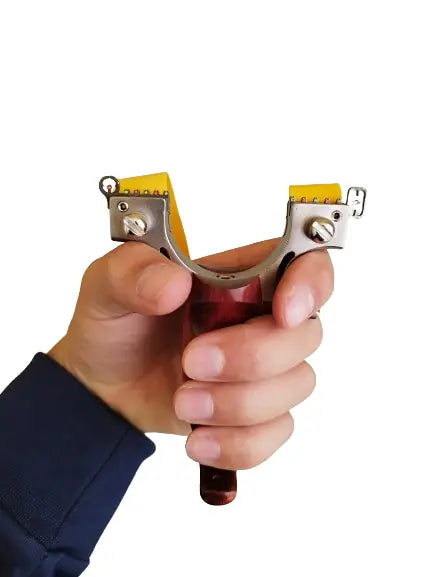
Hunting Slingshots
This Hunting Slingshot Catalog contains the most suitable hunting slingshots for...
-

Plastic Slingshots
Catalog of Slingshots made of plastic or resin of good quality and...
-

Wooden Slingshots
A Wooden Slingshots Catalog for the most classic shooters. Wooden slingshots...
-

Slingshot Cases
You'll find the Slingshot Covers you've been looking for to make your work easier and...




